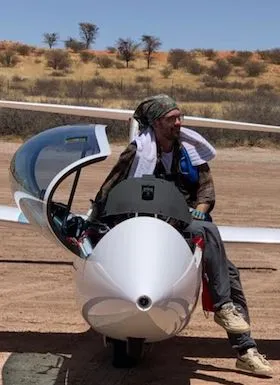Sebastian Kawa | Gliding Expedition to Pakistan
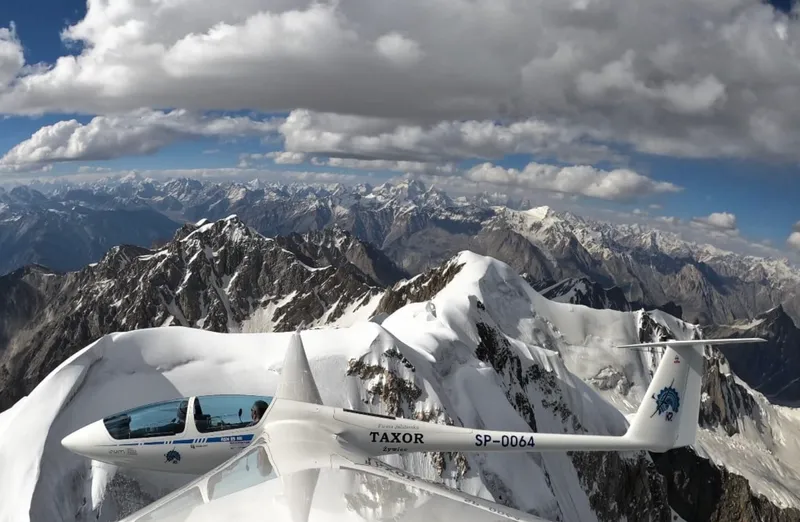
In early June, the world champion and his team set off with their trailer on the journey to Pakistan. We meet Sebastian in Skardu, a small town in northern Pakistan with an international airport. From there, Kawa plans to begin his expedition to his destination, the 8,611-meter-high K2.
We catch Kawa shortly after his first start in Pakistan and congratulate him warmly. The flight seems anything but a given. Just the successful arrival by land is an achievement. As soon as they arrived, the authorities began making Sebastian's life difficult.
Sebastian, tell us about the K2 Mountain project.
I am seeking real challenges. This is not about flying in well-known places. I have been eyeing this region for a long time, anticipating good thermal conditions because it is a desert. If it were not any glaciers, it would be completely dry. Two years ago, a group of paraglider pilots from Spain showed us that flying in the Baltoro area is possible. Although they did not reach the summit of K2, they flew in thermals around it. They had much better opportunities to fly here because they did not need permission from everyone around. We also need a runway that is partly military and requires military clearances to fly.
Lacking the funds to start the project, I decided to take a trailer and drive a car 8,600 km through Southern Europe, Turkey, Iran, Baluchistan in Pakistan, and then the Karakoram Highway, which includes a two-day offroad trek to finally reach Skardu. We were escorted by police for almost 1,200 km from the Pakistan border to the highway and then again along the Karakoram.
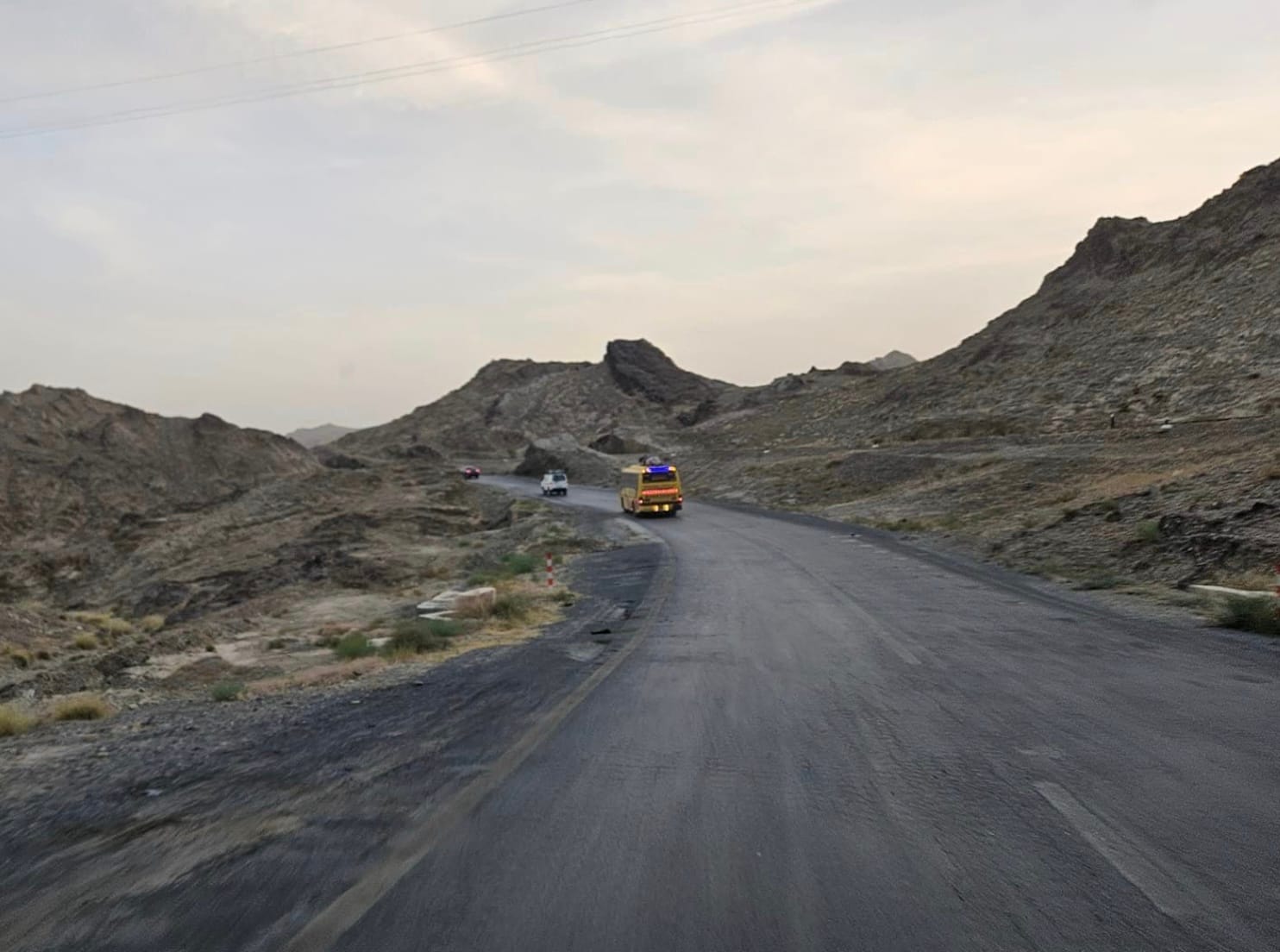
This slowed us down a lot. I will never forget the scorching 52-degree heat in the Iranian deserts and the night convoy from Taftan to Quetta on a destroyed road along the Afghanistan border. Quetta felt like hell on earth; we crossed the city under military escort in a convoy, with policemen on every corner and roads blocked.
This sounds intense. Are you aiming for any records?
Reaching this place is a record in itself. It is a jet stream area, but there is no polar vortex, and we do not have a pressurized glider to fly. The region has proven to be excellent for cross-country flights on thermals, and we already managed to catch a wave to fly over K2. However, the proximity to Jammu and Kashmir limits the flying area to the Hushe (around Masherbrum) and Baltoro regions, so flying into India is not possible, although it would be fantastic.
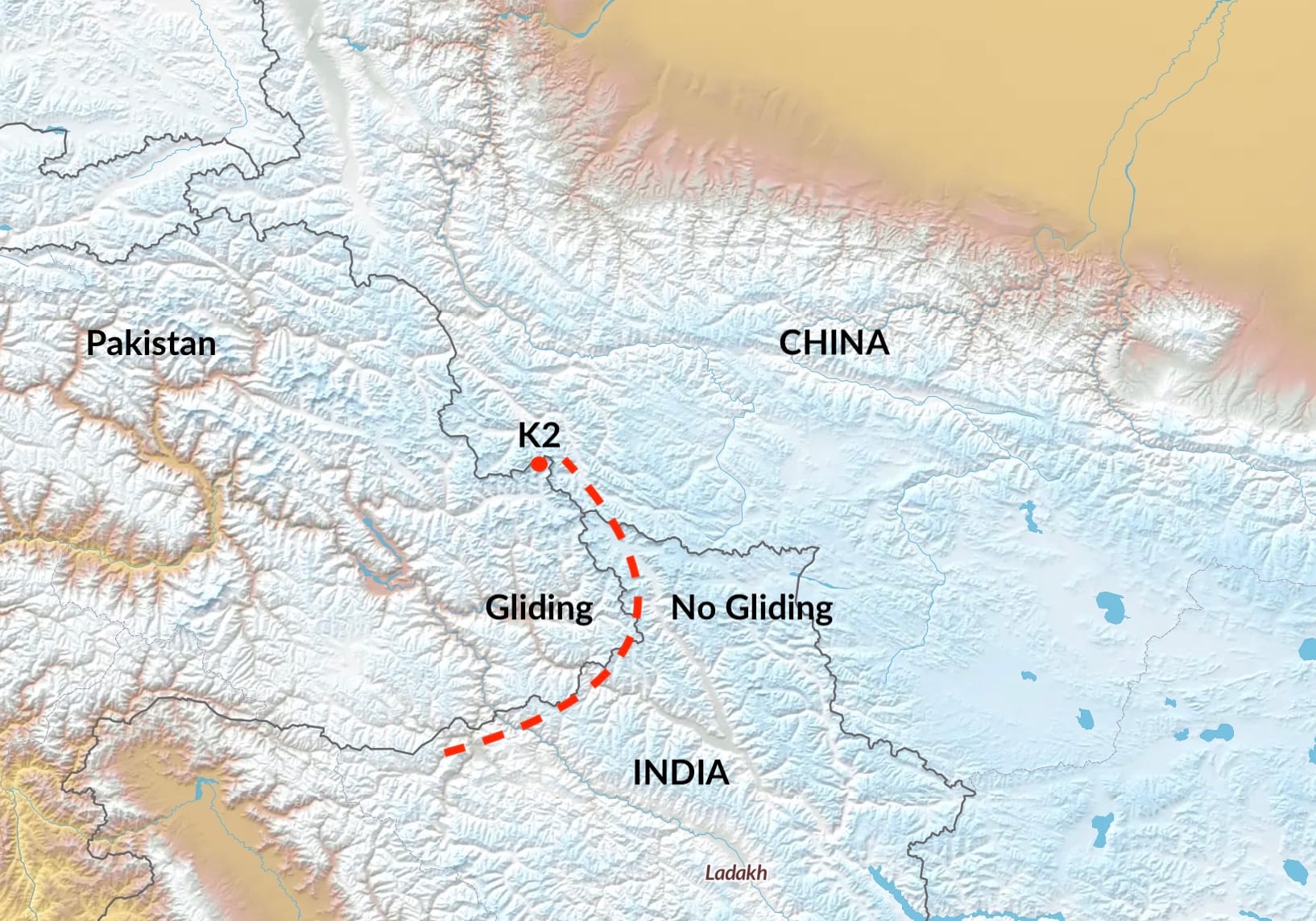
Sounds like you struggle a lot with permissions and restrictions.
This is a border area with China, making it very difficult. The Pakistan Air Force had to coordinate our permissions with China. Initially, they did not, which caused a reaction from the other side because our glider, equipped with a transponder, was clearly visible in the ADIZ area on the Pakistan side. Of course, they were asking what was going on. K2 and other interesting peaks are at the border, so we will see if the clearance will include future flights there.
To be here, we had to get permission from the CAA Pakistan Headquarters in Karachi, the military base at Skardu Airport, the Pakistan Air Force in Islamabad, and the Airport Security Force, which sent us to the Internal Ministry and Foreign Ministry. In the meantime, there were holidays here, which slowed down the process, and we had to wait. However, it was still twice as fast as in Nepal. At the local government offices in Skardu and Shigar, we had to pay a paragliding fee and get permission from the local police. We are allowed to fly after the last commercial flight leaves the valley, around 2 PM, which is too late for us to avoid overdevelopment.
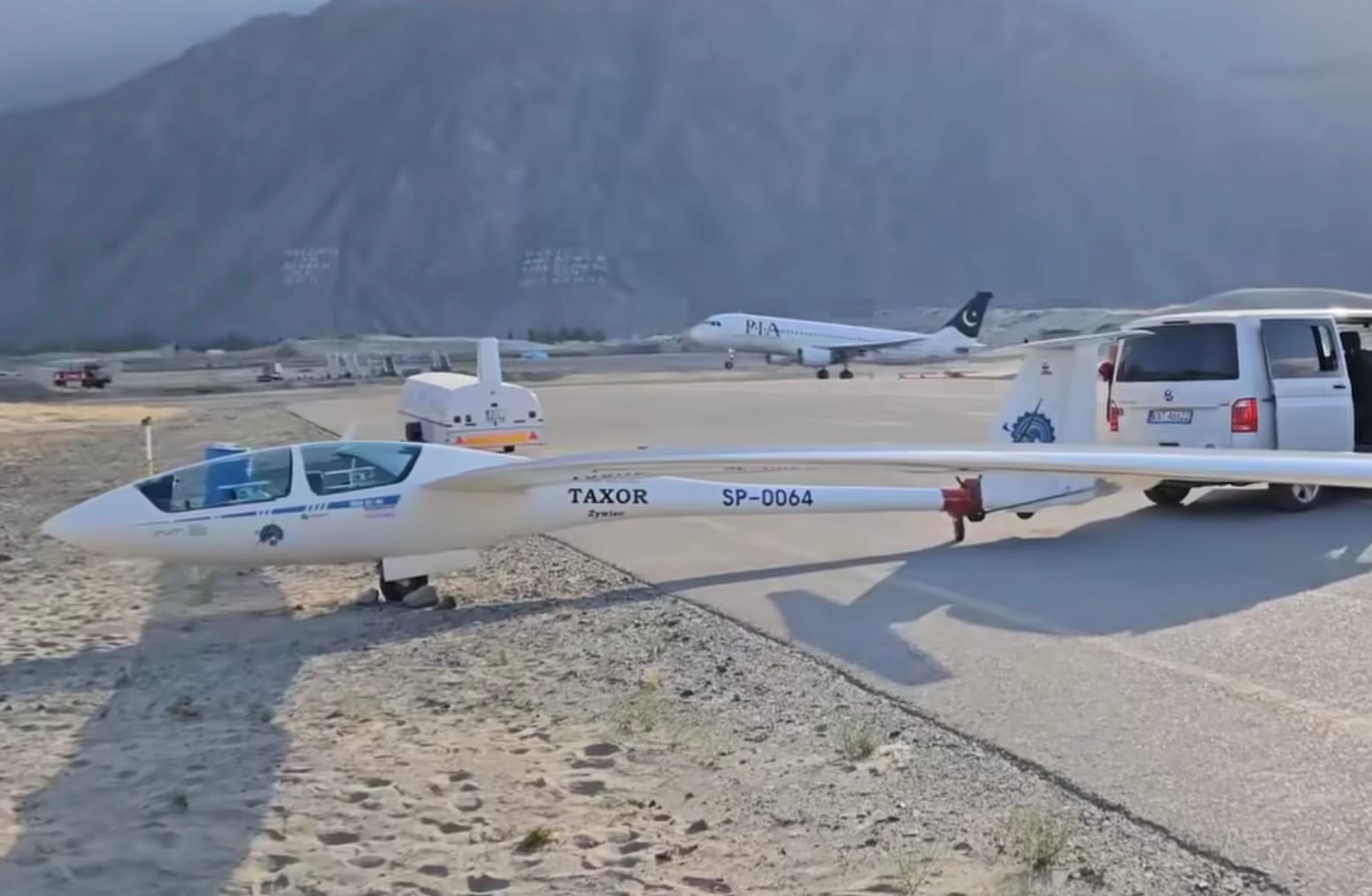
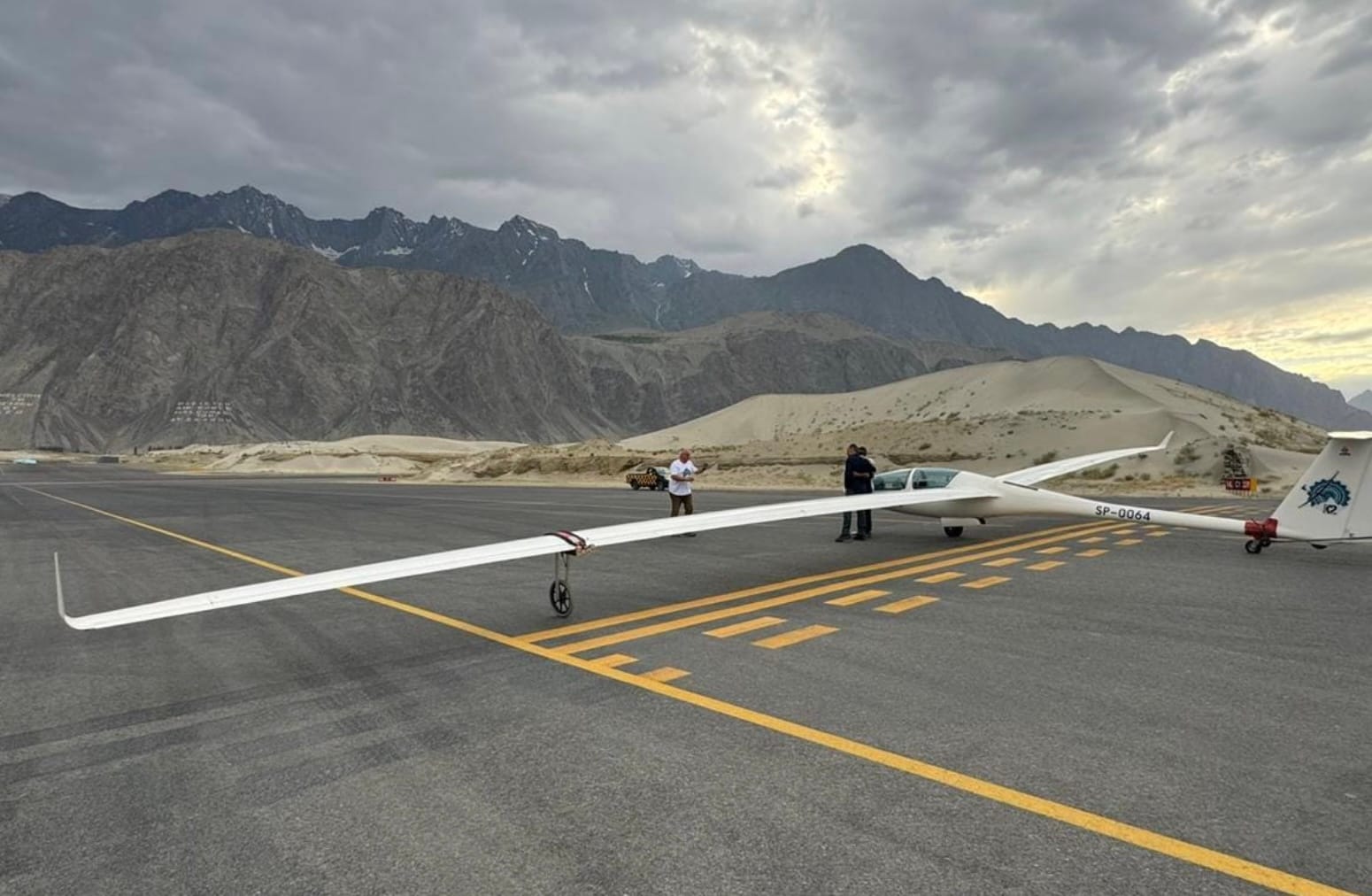
Gliding at Skardu Airport
I hope to change this, but delays with permissions caused us to enter the monsoon season, and the weather is not as good as it was in late June. My plan actually was to fly in June. On the other hand, the jet stream is the best option to fly over 8000m peaks, so it is hard to know what is the best option. We take off and explore the weather in place, including some cloud flying away from high peaks.
Tell us flying from Skardu Airport.
In Skardu, we operate from a commercial airport with a huge runway. 3600m long. At these altitudes, this is important. We can use the ASH 25 M engine to get airborne. We initially tried a car tow, but our Volkswagen is not strong enough to lift the glider. We will probably have to combine the car and the glider's engine to start more efficiently. The problem is they do not let us fly early enough, only after the last A320 leaves the valley. We are constantly guarded at the airport with armed guards, and with the follow-me vehicle, we cannot get past parked planes, so we sometimes wait for an hour until it moves. Lots of problems, but on the other hand, there is no other place to fly here.
We also had a big problem when a friend of ours collided with a bike and badly broke a leg. Hospitals here are very poor, so it was a fight with the insurer and a race against time to get him out of here before his health deteriorated. Fortunately, he finally flew to Islamabad and then to Poland, where he got appropriate medical care. There is only one way to get an injured person out of Skardu: by military helicopter. The helicopter finally came, but there was a problem because it could not take a wounded person as it was scheduled to land at a military base in Islamabad and could not fly there with a foreigner. Crazy. In addition, all of us got COVID here, so we had a hard time after all.
Congratulations on your first flights, Sebastian! Was there a Plan B if Nepal did not work out?
This is Pakistan. I believe Nepal is not as interesting for flying. The high moisture from the Bay of Bengal makes it impractical to fly on thermals. You only get good conditions after a frontal system, when the wind is coming from the west along the main mountain chain, creating waves on small ridges. Thermal bases are typically between 2,000 and 4,000 meters, which is too low for regular flying.
In the Karakoram, just across the Indus River to the north, it is so dry that regular thermals reach 6,000 meters and sometimes even 8,000 meters, which is sufficient for flying similar to the Alps. During our stay, the jet stream was slightly north, and there is a regular pattern. The southern slopes leading to the Indus River produce nice thermals, while it is overcast over Baltoro.
You do not take part at WGC in US. Are adventures like K2 more exciting for you now?
That's right. I was not able to get an open class glider for this competition, and the Diana 4 18m was not ready, so I decided to use my time differently. I have 18 gold medals from the WGC, and the competition in Texas is very costly and time-consuming. I could not afford it.
Which other projects are on your bucket list?
For a long time, I have planned to go flying in Antarctica, but it is uncertain if that will happen. I decided to go to Pakistan now because I do not have unlimited time to pursue projects. If not now, it might never happen.
How the gliding community can support you?
Sharing information is very important to me. I also need to ask Schleicher to upgrade the engine in my ASH 25 M 🙂
Thanks for your time, Sebastian.
If you enjoyed the article, please consider supporting us:
If you would like to receive the second article of our series about glider manufacturers directly by email, you can sign up for this in your profile:
